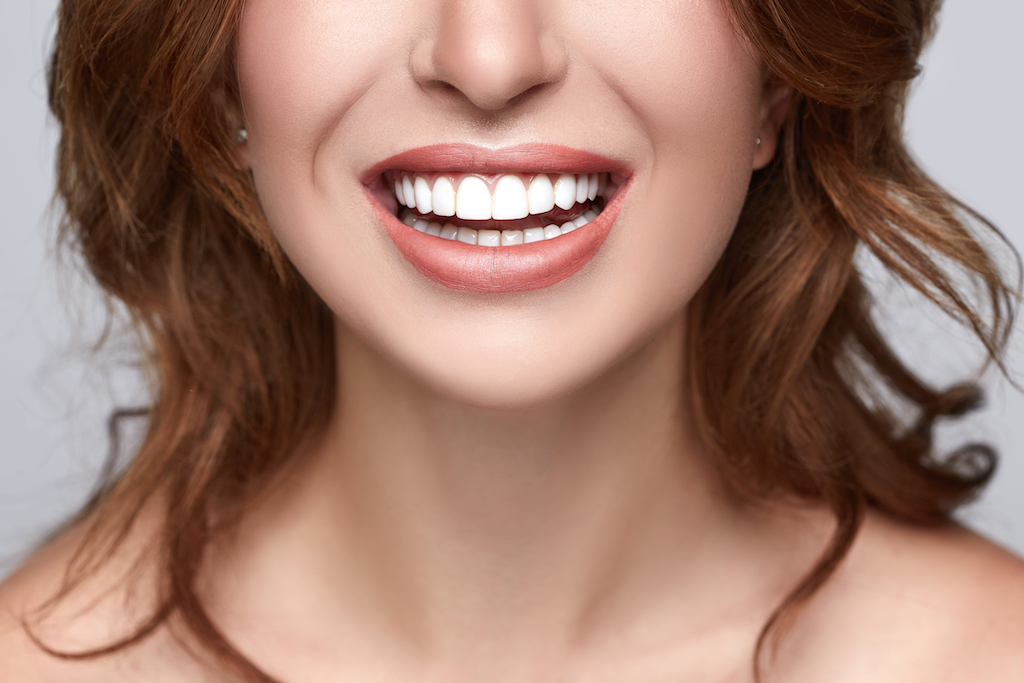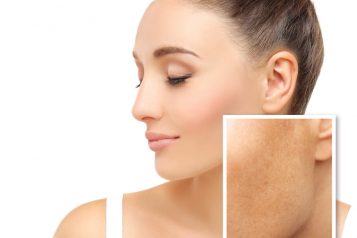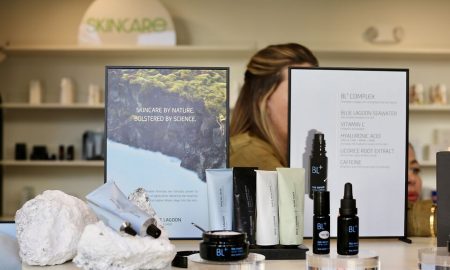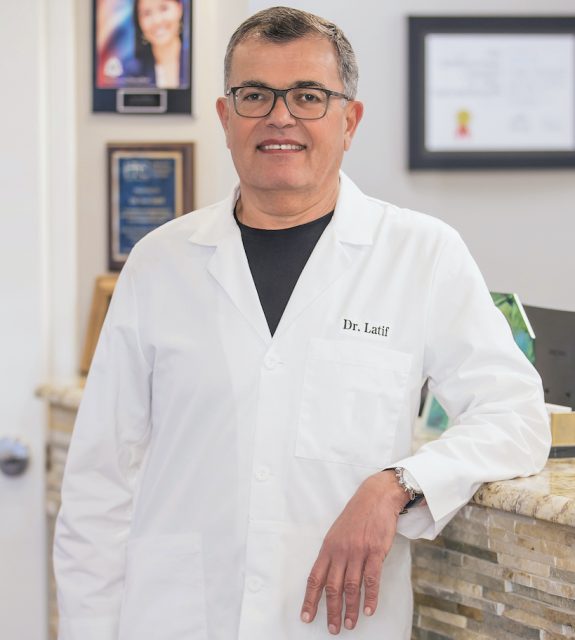 Photo Credit: Shutterstock
Photo Credit: Shutterstock
What are Porcelain Veneers?
Actually, porcelain veneers have been around for a short period of time, with them being invented in 1983. This improvement in dentistry changed dentistry into a more conservative era, where previously the most common way to cover or change the appearance of teeth was to grind a tooth into a “stub” and make white crowns or “caps.” This technique is obviously undesirable because it requires the natural tooth to be prepared heavily to receive the crown.
Porcelain veneers have revolutionized the art and science of cosmetic dentistry over the years, with the materials and techniques getting better that only benefits our patients.
What are the biggest misconceptions you hear from patients about veneers?
My most recent misconception was people can’t eat with your veneers. Once porcelain veneers are completed, you should be able to eat, chew and function comfortably. That means being able to bite into an apple. The only thing I tell my patients is don’t do anything with your veneers you wouldn’t do with your natural teeth -including opening bottles with your teeth.
The most common misconception is 'I don’t want fake-looking teeth.' We totally agree, as we want to maintain the character of your smile, and only enhancing it. Once completed, we don’t want our dental work to be noticeable (no chiclet looking smiles) but rather have our patients appear like they are relaxed and better versions of themselves without knowing what they did.
The cool thing about what we do revolves around customization. First, I discuss with the patient what is possible based off their wants and wishes. I also take into account their personality, how they talk, the expressions they make, while making sure their teeth also work functionally so they can still eat. It’s important to realize that when executed properly, porcelain veneers can often be mistaken for “perfect” natural teeth. “If it's done well, you actually can't tell. They're supposed to look like your natural teeth, with the shapes and indents and texture. But if it’s done poorly, it’s easy to tell. It changes your face. It pushes your lip out. Sometimes even the way they talk is changed.”
How many of your patients show an interest in veneers? Is it a large percentage of your patients, or is it a less popular procedure at your practice?
Now, as our office is growing in the New York City area, a large percentage of our patients are coming in for smile consults with questions on how to improve their smiles. Lately, we are doing more and more revision work on veneer cases where the patient tells us they never knew the final result would look that way. Especially bulky restorations that we see commonly, forget the esthetics of the case, the function and gums are unfortunately compromised that we are constantly removing. (see one below with a revision case). In these and all cases, we strive for a seemless look. Once our cases are done, I want my patients to still be themselves, only a better version of themselves. My recent patient stated, “People are always asking me what I have done and they can’t put their finger on it. I feel like I look younger, and I am so happy that my smile finally matches my mood.”
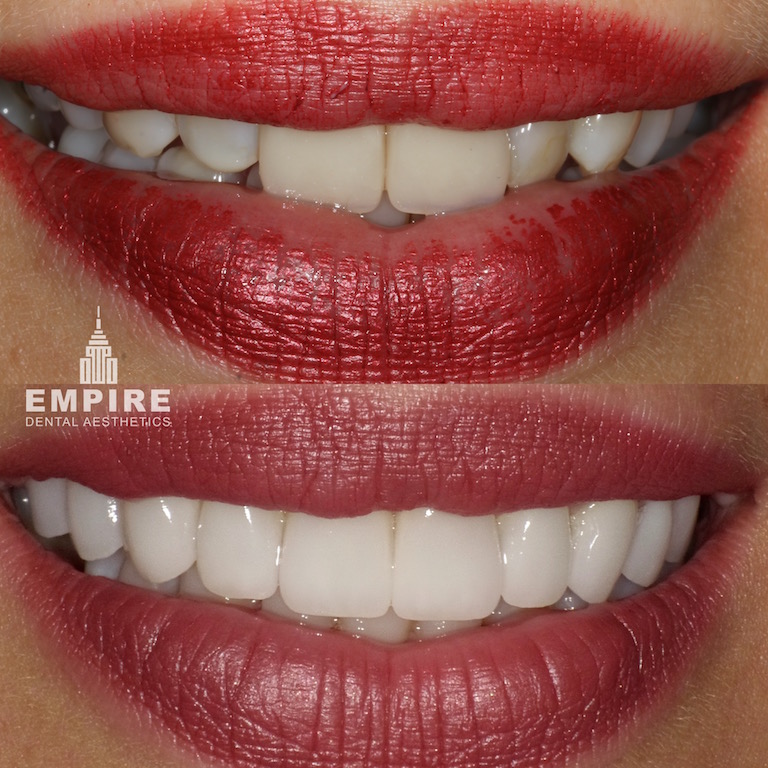
How do Porcelain Veneers work?
It really depends, as we coordinate this often as we have many traveling patients from a distance in the USA, as well as from other countries. If the gum health is good and there is no need for gum work or conditioning, usually it takes only two appointments, after the initial consult. If the gums need to be contoured or lifted, that will add time.
Typically, what you can expect is at the first appt, or consultation, you will have an exam, checkup, x-rays taken, photographs, smile design fabrication and a discussion on your goals and addressing all your questions.
At the second appointment, we discuss and answer all your questions regarding the design, and the teeth are shaped for veneers with minimal invasive dentistry protocols. You will finish with temporary teeth that you will go home with, as they are designed closely to look like the final teeth. It is at this point any modifications can be made to shape and contours of the teeth and the design is reviewed.
At appointment three, the final porcelain veneers have been designed and made and are placed initially with temporary cement for the patients approval. Once approval is achieved, the veneers are bonded in place.

How do no-prep veneers differ? What are their benefits and drawbacks?
These are common buzzwords now, and many dentists have pushed these words on social media. Veneers are conservative dental restorations that go on the tooth, like a contact lense effect. Veneers can be placed on teeth that were minimally prepped or not prepped at all. What determines if the tooth is “touched or prepared” is the initial tooth color and position, and what the final tooth color and position will be in the new smile design. If its possible, prep-less veneers can be made that are beautiful and biologically sound restorations. What is key in this discussion is what teeth are we starting with, and what we want the teeth to look like in the final smile design. It's not if I can get prep-less porcelain veneers, its more if it's possible with the teeth we are starting off with. Usually, patients with small teeth with spaces are candidates for prep-less veneers.
For more information, visit Dr. Husam Almunajed's social media:







